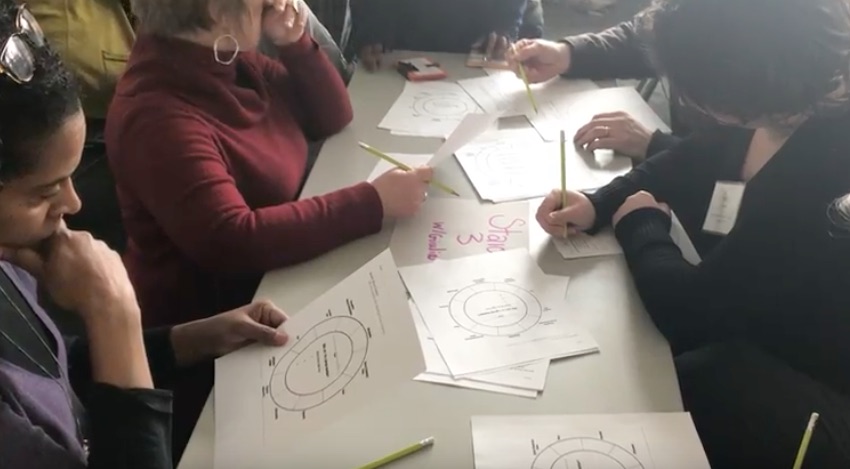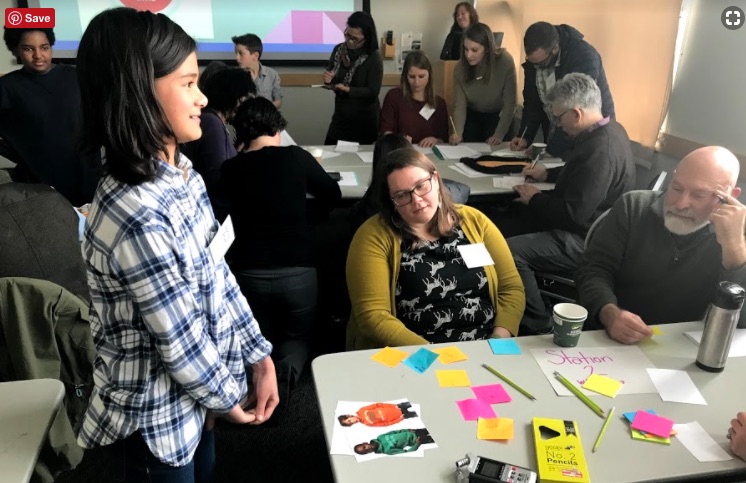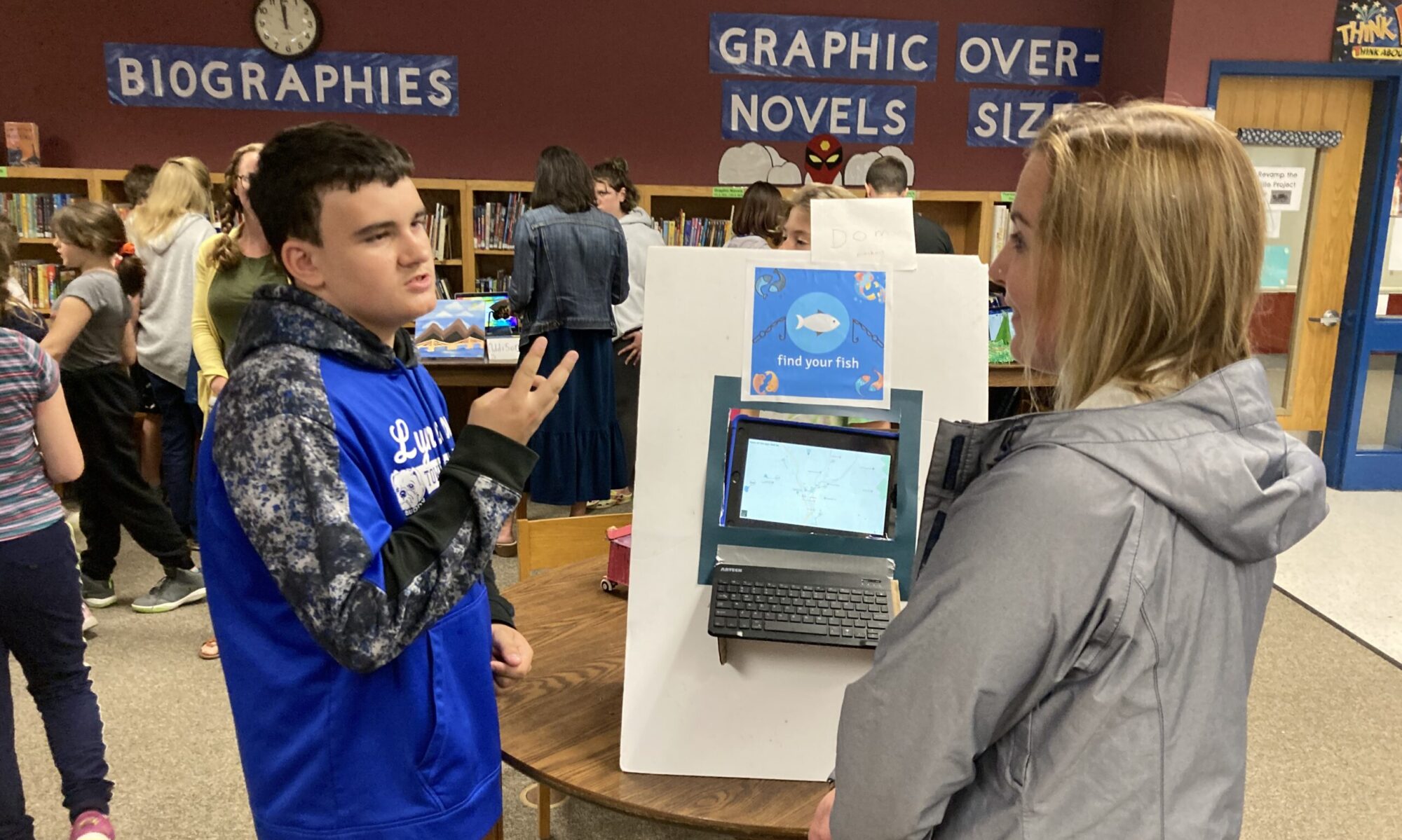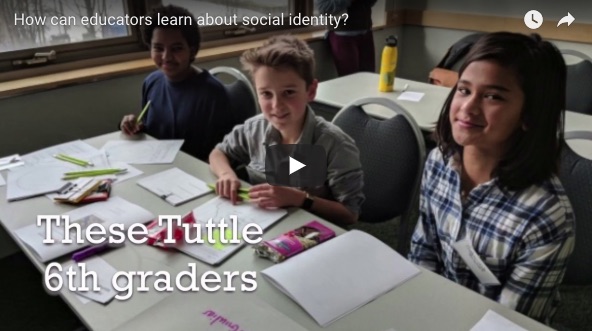A trio of Tuttle 6th graders led educators from around Vermont through activities in bias-awareness and social identity at the 2018 Middle Grades Conference. And what they learned from those educators is every bit as powerful as what the educators learned from them.

Three sixth graders from Frederick H. Tuttle Middle School designed and led the workshop on diversity and bias with the support of their teacher, Christie Nold. The workshop consisted of different “stations” where each student led a small group of educators in an activity and discussion.
The “Iceberg Model”
Leo led educators through an exercise called The Iceberg Model. For this exercise, envision an iceberg: the 10% you can see above the surface, and the other 90% below the water. Leo gave the educators visual diagrams of icebergs and asked them to fill out what the 10% they believe people know about them, as well as sharing some of their “submerged selves”.

Identity wheels
Giulia led educators through an exercise where they mapped their various social identities on a wheel diagram. “You put a One or a Two for the identities you think about most,” Giulia told them. “Like, [for me] my age, my race or my gender is a One because I think about that a lot …but a Two’s like my ethno-origins. I don’t think about that as much, because I’m busy with other things.”

Bias in advertising
Sabrina showed educators advertisements from 1884 and 2017, and invited them to notice how the messages — including racism and sexism — hadn’t really changed. She then led them in a discussion of what that could mean about larger social change forces, the speed with which they move and how to be more astute analysts of media.

Interviewed afterwards, the students reported on what they learned from the experience.
“I was really being listened to,” Giulia said. “No one was interrupting me and they were actually hearing what I was saying and reflecting off of that.”
Sabrina reported that educators at the advertisement station looked shocked that “this kind of thing is still happening. That racism and sexism is still happening today …It’s a topic that doesn’t get talked a lot about and it’s a topic you just can’t ignore.”
Then the students shared the experience with their school board.
We’ve seen students present on PLPs, and weigh in on their school’s re-design. The Tuttle sixth graders presented to their school board on how empowering it was for them to be able to lead the workshop for those educators. Presentations like these can help school boards understand the crucial role of student voice in education.
Students presenting at School Board meetings make it real for all of us! Thank for being such an amazing teacher leader. #SBproud
— Diane Bugbee (@DianeBugbee) February 22, 2018
In Vermont, more educational conferences and school boards are opening their doors to students. This allows for students to speak directly to the future of their own education and have a broader impact on personally relevant topics.
What are some other ways students and educators can work together on learning more about social identity?


